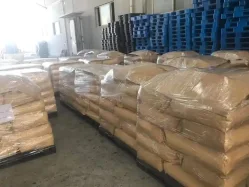Considerations related to phthalocyanine pigments
2024-02-27
Phthalocyanine pigments are a class of synthetic organic pigments known for their brilliant and stable colors. These pigments are derived from phthalocyanine, a large and complex macrocyclic compound. Phthalocyanine pigments are widely used in various applications, including paints, inks, plastics, and textiles. Here are key features and considerations related to phthalocyanine pigments:
1. Chemical Structure:
- Phthalocyanine pigments are derived from the phthalocyanine macrocycle, which consists of four isoindole units linked together by nitrogen atoms. The central metal atom, often copper, plays a crucial role in the coloration of the pigment.
2. Color Range:
- Phthalocyanine pigments are available in a wide range of colors, including blue, green, and turquoise. The specific color is influenced by the choice of metal in the central atom and the substitution of various functional groups.
3. Stability:
- Phthalocyanine pigments are highly stable, both chemically and thermally. They resist fading and degradation when exposed to light, heat, and chemicals, making them durable in various applications.
4. Lightfastness:
- These pigments are known for their excellent lightfastness, maintaining their color intensity and vibrancy over time. This property makes them suitable for outdoor applications and high-exposure environments.
5. Opacity and Transparency:
- Phthalocyanine pigments exhibit good opacity, providing solid coverage in paints and inks. However, they can also be formulated to achieve varying levels of transparency, allowing for versatile applications.
6. Applications in Paints:
- Phthalocyanine blue and phthalocyanine green are commonly used in the formulation of artists' paints, including acrylics, oils, and watercolors. They are valued for their intense color, stability, and versatility in mixing.
7. Printing Inks:
- Phthalocyanine pigments are widely used in the production of printing inks, especially in the graphic arts and packaging industries. Their stability and color consistency contribute to high-quality print results.
8. Plastics and Polymers:
- Phthalocyanine pigments are employed in the coloring of plastics and polymers. They are used in the production of plastic products, including packaging materials, toys, and consumer goods.
9. Textiles and Fibers:
- These pigments are utilized in the dyeing of textiles and synthetic fibers, providing vibrant and colorfast hues. They are resistant to fading during washing and exposure to sunlight.
10. Coatings:
- Phthalocyanine pigments find application in various coatings, including automotive paints, industrial coatings, and architectural paints. Their durability and color stability contribute to long-lasting finishes.
11. Electronics:
- Phthalocyanine pigments are used in electronic applications, such as color filters for liquid crystal displays (LCDs) and organic light-emitting diodes (OLEDs).
12. Environmental Considerations:
- While phthalocyanine pigments themselves are generally considered safe, concerns may arise regarding the environmental impact of the phthalocyanine dye industry. Proper waste disposal and recycling practices are essential to mitigate potential environmental effects.
Phthalocyanine pigments are valued for their versatility, stability, and brilliant colors. They play a significant role in various industries, contributing to the visual appeal and durability of a wide range of products. As with any chemical substances, proper handling and disposal practices should be followed to ensure safety and minimize environmental impact.



